JOINT BASE LEWIS-MCCHORD, Wash. — The Program Executive Office for Ground Combat Systems hosted a two-day demonstration event at JBLM August 24 and 25, highlighting state-of-the-art communications and visual augmentation technology integrated into U.S. Army Stryker armored vehicles as well as Soldiers’ individual combat gear.
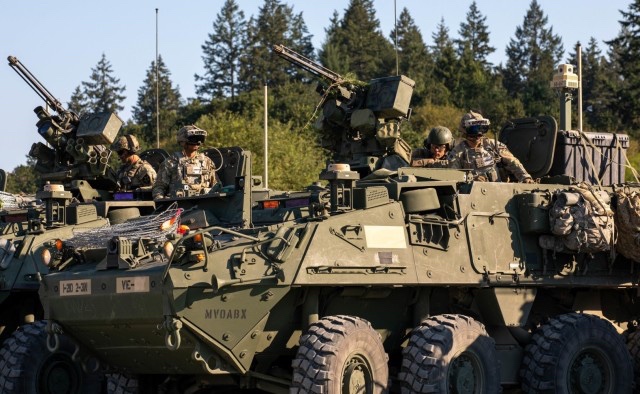
The event was part of the ongoing development of the Integrated Visual Augmentation System — or IVAS — based on Microsoft’s existing HoloLens 2 technology that has been tested by Soldiers since 2019. The IVAS system is an augmented reality goggle that provides Soldiers with real-time battlefield information such as enemy and friendly locations, navigation information, and high-resolution night and thermal vision.
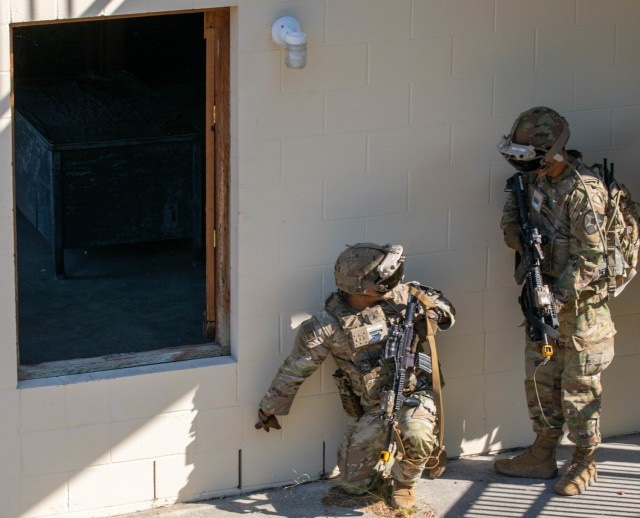
IVAS’ capability is being significantly expanded with the latest iteration, according to David Morris, Ph.D. and lead network engineer for MITRE Corporation’s Army Platforms Division.
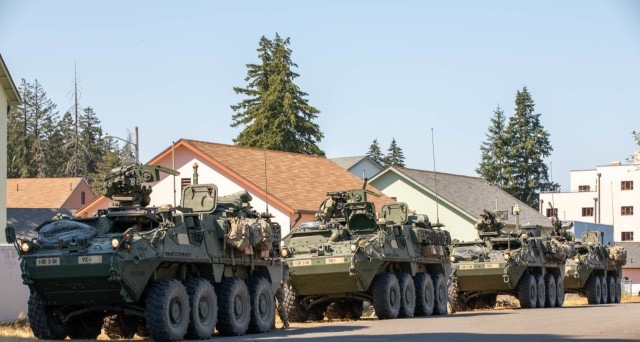
“The major new technologies we’re experimenting with today are the Tactical Scalable MANET waveform, which is bringing data down to the forward tactical edge to the dismounted Soldiers and to the vehicles, and connecting those systems together so that everybody has awareness of where the others are,” Morris said. “You can send messages, lay down graphic overlays, mission data, et cetera, so that you’ve got better capability that previously was only available up at the command post.”
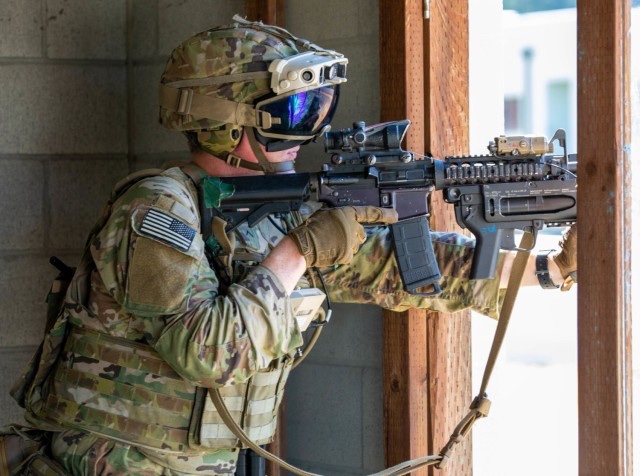
High-quality camera systems were also integrated into the Strykers and linked with IVAS, said Morris.
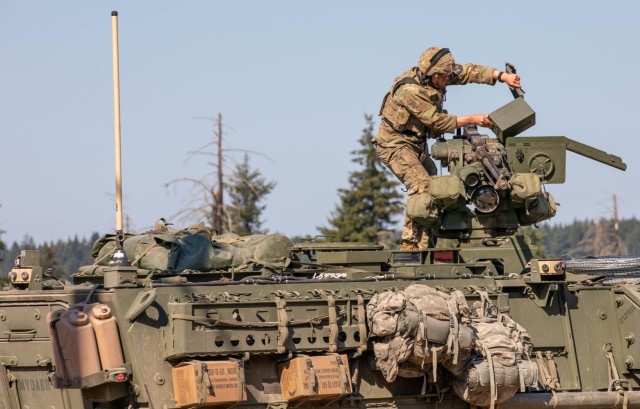
“The other piece we’re adding is 360-degree situational awareness,” said Morris. “We’ve added a variety of cameras to supplement the existing vehicle cameras. So instead of just having the gun camera and the relatively small forward and reverse cameras, now we’ve got high-end cameras all the way around the vehicle with both day and night vision. The Soldiers wearing the new IVAS technology are able to use those cameras and access them while they’re en route to mission. Instead of staring at a blank steel wall, they can keep up with what’s going on around the vehicle. They can also switch to a tactical map mode so they can see what’s going on around their broader mission area.”
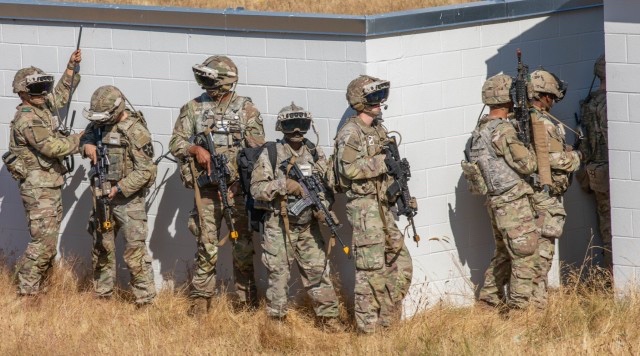
The culminating event of the demonstration involved a platoon task force of five Stryker vehicles operated by 3rd Platoon, Blackhorse Company of 2-3 Infantry Regiment, 1-2 Stryker Brigade Combat Team carrying infantry Soldiers on a movement-to-contact and urban raid mission to seize and clear a building in Leschi Town, a training range at JBLM.
An operation of this size previously would have been conducted with a larger company-sized force, but the new expansion of IVAS increases capability such that one platoon can carry out the mission, according to Phillip Landan, assistant program manager and product lead for Ground Combat Product Integration.
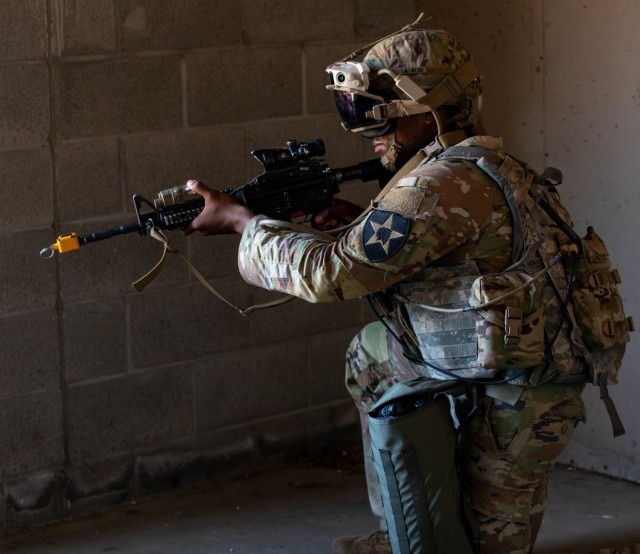
Putting new tech into Soldiers’ hands during the product development stage and conducting simulated combat exercises like these enables developers to reduce cost, schedule, and performance risks, validate prototype installation and interoperability, and capture Soldier feedback to improve future designs, according to Program Executive Office for Ground Combat Systems.
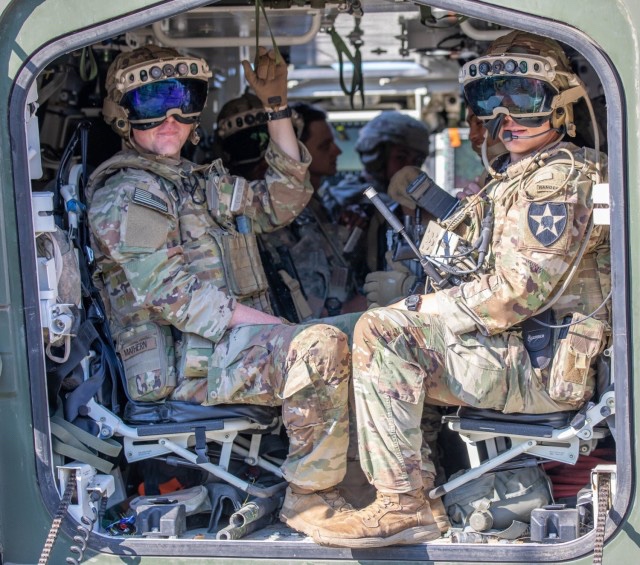
Soldiers were given several surveys to fill out following each training exercise along with conducting after-action review meetings, giving direct feedback to the various offices and companies who are developing the systems so that their input can be used to improve the final product.
The increased capability was generally well-received by the Soldiers testing out IVAS, who have been training on it for the past two weeks leading up to the demonstration.
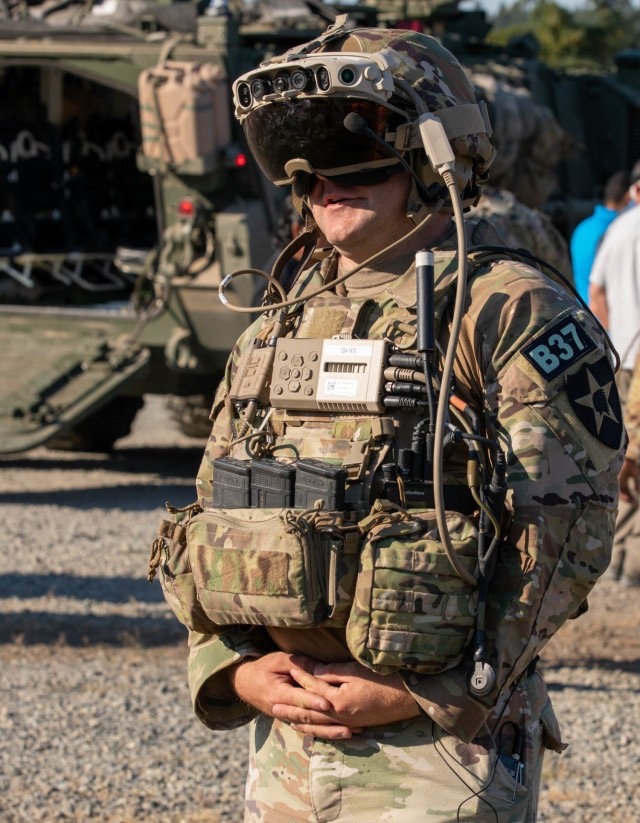
“When all doors and hatches in the Stryker are closed, I can see 360 degrees around my vehicle to check for IEDs, check where my other vehicles are and check their movement, and all of that has been a huge asset to us these last two weeks,” said Sgt. 1st Class Kyle Williams, third platoon leader for Blackhorse Company. “The situational awareness that I’m able to gain at a leader level from being able to see the icons for where all my [Soldiers] are means I can do route planning, I can do mission planning, I can publish graphical overlays, I can navigate with literally a turn-by-turn navigation feature, and I can send messages back and forth to the members of the platoon.”
This means that every Soldier can better contribute to accomplishing the mission, said Williams.
“It greatly enhances our ability to operate.”
By SPC Chandler Coats


Land Warrior 3.0?
Land warrior never really died it just got revised about a half a dozen times now. They went from the first demonstrator set which was based on a off the shelf PC tower on a back pack to Nett warrior which started using Tablets.
How to say your unconstitutional Army is no longer relevant, without going back to wearing face diapers.
Funny how there’s nothing in the Constitution against the formation of a standing army.
“To raise and support Armies, but no Appropriation of Money to that Use shall be for a longer Term than two Years;”
https://constitution.congress.gov/browse/article-1/section-8/clause-12/
No appropriation of money is used to “raise and support Armies” for longer than two years, Congress votes on it (as well as every other part of the Federal budget) every year.
Future Force Warrior flashbacks… Live, Laugh, Love Dix
Well in a way some of that stuff came to be didn’t it? I mean no not the ninja suit. But a good deal of the “Objective force” one did. What seems to have finally pushed this and the digital stuff is the gaming and IT industry is almost there.
Very true; it still stings knowing how much money & effort was wasted on non-starters… :/
https://www.researchgate.net/publication/235073027_Weapon-Centric_Graphic_Controller_User_Evaluation
ATAK, the product of Nett Warrior, which was the surviving part of Land Warrior (AFAIK) is what IVAS is utilizing for the blueforce tracking/position sharing, data management, etc.
In a way, this is like an ATAK EUD that you can give to everyone by virtue of the heads-up display format.
I hate to throw some cold water on this, but the idea that a Platoon with IVAS is 3x more effective and can now seize a Company sized OBJ is laughable. Sure, IVAS maybe useful and may be more efficient, but it is not a 300% improvement.
Also, looking at picture of the PSG, I got to say, that cable management must be a nightmare with this thing.
The MOST interesting thing about this demo was that they are using Mobile Adhoc Network (MANET) which is what goTenna and Meshtastic use. Mesh networks are very much the future of tactical networks. Typical FM (UHF/VHF) radios are good but suffer from retrans/repeater limitations, poor signal penetration in urban, subterranean, and dense forrest/jungle environments, and also are fragile (take out now retrans and the massive chunks of the network can fall apart. Mesh networks solve all of these problems.
Land Warrior was always a bridge too far for the Army. They generally knew what they wanted but needed the technology to catch up (took nearly 30 years). We are now at a point where we can BEGIN to put the IDEAS of Land Warrior into practice.
Hopefully the Army can solve some of the cable issues (one cable life) and integrate some of these technologies into a helmet design instead of just a couple flimsy straps onto an ACH. Just looking at how motorcycle helmets are developing, it is highly likely that by 2050 we will have some sort of standard issue stormtrooper helmet.
With all that said, lets not that over emphasize this technology and believe for one second that IVAS will triple a unit’s effectiveness. If planners go down that route, we will defiantly get our teeth kicked in, especially in a real urban environment. FYI, Leshi Town is NOT an actuate representation of an urban combat zone a la Aleppo, Shusha, Mariupole with its mowed grass, empty rooms, no rubble/debris, no civilians, no buildings over 3 stories, and lack of tunnels. It is a weak facsimile of a modern town, let alone a dense urban environment.